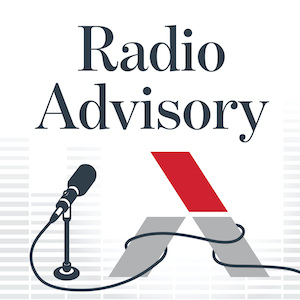To help people managing Covid-19 in their homes—and avoid further burdening overwhelmed hospitals—several industry experts developed Covid Watch, an automated text messaging system that monitored individuals' symptoms to determine when, and if, they needed to go to the ED.
The Covid Watch system was developed by Krisda Chaiyachati, medical director for Penn Medicine OnDemand and assistant professor of medicine at the University of Pennsylvania Perelman School of Medicine; M. Kit Delgado, deputy director of the Penn Medicine Nudge Unit and assistant professor of emergency medicine and epidemiology at the Perelman School of Medicine; and Anna Morgan, medical director of Covid Watch and assistant professor of medicine at the Perelman School of Medicine.
Radio Advisory episode: How technology will impact health care over the next decade
Covid Watch program details
In an op-ed published in STAT News, the developers explain that the Covid Watch program was launched in March 2020 to help individuals determine whether they needed to simply isolate and manage their care at home or whether they needed to seek treatment at an ED, allowing them to receive potentially lifesaving treatments early enough to make a difference.
So far, according to the developers, over 20,000 individuals have enrolled in the program, which is available to both English and Spanish speakers. Enrollment in the program lasts for 14 days, at which point patients are offered the option to continue enrollment seven additional days.
Twice a day, patients enrolled in the program are asked, "How are you feeling compared to 12 hours ago?" If an individual indicates they feel worse, they are automatically asked, "Is it harder than usual for you to breathe?" Any participants who respond "yes" receive a call from a clinician to assess their condition within one hour.
During the program's peak enrollment, more than 1,000 patients were receiving care from a team made up of seven or eight nurses who covered day and night shifts—and responded to patients within 24 minutes on average, according to the developers.
Key findings and outcomes
According to the developers, program participants were 68% less likely to die from Covid-19 than individuals from a control group who were not enrolled in the program—largely because Covid Watch participants had more communication with care teams over telemedicine and often went to the ED earlier.
In addition, research from the developers published in Annals of Internal Medicine found that enrollment in the program was associated with reduced mortality for individuals who received at-home care.
Specifically, the study compared 30-day and 60-day outcomes for 3,488 patients enrolled in the program and 4,377 control participants. At 30 days, Covid Watch participants had 1.8 fewer deaths per 1,000 patients and 2.5 fewer deaths per 1,000 patients at 60 days. Covid Watch patients also had more telemedicine encounters and ED visits compared with non-participants. In addition, program participants went to the ED on average 1.9 days sooner.
How could this program impact the future of health care?
While other industries have adopted wide-spread automation, the health care industry has been slow to adapt. According to the program developers, the automation process could help lower health care costs and mitigate staffing strains by reallocating certain tasks to a machine—just like Covid Watch's automated text message monitoring system.
Crucially, the developers write, restructuring the delivery of care does not mean that doctors, nurses, pharmacists, and other frontline staff will be replaced; rather, if used correctly, it could help providers expand their capacity—"and let them focus on those that require human-to-human connections." (Chaiyachati et al., STAT News, 11/15; Delgado et al., Annals of Internal Medicine, 11/16)
Listen to the Radio Advisory episode
Technology changes fast, and what the health care landscape looks like today may be completely different in a year. But what about in a decade? In this episode, host Rachel Woods sits down with Advisory Board's John League and Nick Cericola to talk about the role of technology in the future of health care and what the next decade might look like in the health care industry.
Don't miss out on the latest Advisory Board insights
Create your free account to access 1 resource, including the latest research and webinars.
Want access without creating an account?
You have 1 free members-only resource remaining this month.
1 free members-only resources remaining
1 free members-only resources remaining
You've reached your limit of free insights
Become a member to access all of Advisory Board's resources, events, and experts
Never miss out on the latest innovative health care content tailored to you.
Benefits include:
You've reached your limit of free insights
Become a member to access all of Advisory Board's resources, events, and experts
Never miss out on the latest innovative health care content tailored to you.
Benefits include:
This content is available through your Curated Research partnership with Advisory Board. Click on ‘view this resource’ to read the full piece
Email ask@advisory.com to learn more
Click on ‘Become a Member’ to learn about the benefits of a Full-Access partnership with Advisory Board
Never miss out on the latest innovative health care content tailored to you.
Benefits Include:
This is for members only. Learn more.
Click on ‘Become a Member’ to learn about the benefits of a Full-Access partnership with Advisory Board
Never miss out on the latest innovative health care content tailored to you.

